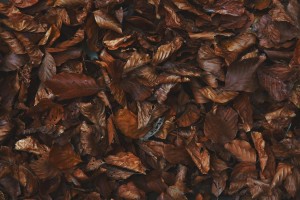 Any way you look at it, fall leaves are a major hurdle in lawn care. Disposal can be expensive, and removing leaves strips the soil of nutrients. However, by putting a few practices in place, you can reduce your disposal and fertilizer needs, saving you time and money.
Any way you look at it, fall leaves are a major hurdle in lawn care. Disposal can be expensive, and removing leaves strips the soil of nutrients. However, by putting a few practices in place, you can reduce your disposal and fertilizer needs, saving you time and money.
Why Leaf Disposal is Important
There are several reasons you need to remove or break down leaves to protect your lawn:
– Leaves create a mat that blocks light and air while slowing drainage. This can kill grass directly, or prevent it from storing enough food to survive the winter.
– Most grasses thrive in soil with a pH between 6 and 7. Freshly fallen leaves can have a pH below 6, exposing the grass to acidic conditions. This hampers grass growth and increases the growth of acid-loving weeds until the leaves decompose and return to a neutral pH level.
– Plants like black walnut and hickory produce a natural herbicide that affects a wide range of plants. This becomes a problem when their leaves cover the ground.
Simply picking up and throwing out leaves isn’t the best solution. 50% to 80% of a tree’s nutrients end up in the leaves. Removing them strips these nutrients from the soil, increasing the need for lawn fertilizer. However, leaves can be reincorporated by aiding decomposition on the ground or composting them into mulch.
Leaving Leaves on the Ground
Smaller leaf parts decompose faster than large ones. A mulching mower can break up leaves into smaller pieces. However, during peak season, the leaves may need to be broken up two or three times per week. A better strategy is to use a Billy Goat lawn vacuum or debris loader. Leaves that pass through these machines are chopped up by the impeller. This speeds up decomposition and lets you return the leaves to the ground when the soil can handle them.
Black walnut, butternut, hickory, and English walnut produce the allelochemicals juglone and hydrojuglone. These are natural herbicides that kill off competing plants. Poisoned plants will turn brown and wilt, especially when stressed by extreme temperatures. Leaves from these plants should be removed from lawns to prevent damage.
Composting
Leaf disposal facilities are set up to compost collected leaves, but it’s also possible to compost on-site. This lets you return nutrients to the soil, saving money on fertilizer and leaf disposal.
In a properly managed pile, most hazardous chemicals including juglone and oxalic acid will decompose in 4-6 weeks. At this point, the compost can be safely used anywhere. The exception is urushiol, the oil in poison ivy. It can take months to decompose, and it leaves a residue on bins and tools. Parts of this plant must be kept separate from your leaf pile when you make compost.
Roots and seeds can survive the composting process. This isn’t a concern if you’re only dealing with leaves. If you’re doing other landscaping on the property, you may end up mixing parts of unwanted plants into the pile. When you spread the compost, you’ll also spread unwanted seeds across your lawn.
Composting leaves is easy. Traditional composting requires some additions to balance out nutrients. Leaves are low in nitrogen, so they need to be mixed with them with high nitrogen material like grass. However, leaves can compost by themselves thanks to leaf mold. A variety of fungi are already present on fallen leaves and just need a boost to break down the pile. The leaves need to be shredded, and the pile needs to be thoroughly moistened. Mixing partially decomposed leaves will speed up the process. If you already used a vacuum or loader to collect the leaves, the resulting mulch just needs to be wetted down and covered.
For the best results, pile the leaves into a bin that’s at least three feet deep, wide and long. Alternatively, you can keep the leaves in a large plastic leaf bag. Cut a few small slits in the bag to let in air. Check the compost every month or so, stirring the pile and adding water as needed. The decomposition will keep the pile warm throughout the winter. By next spring or summer, the compost will be ready to use on your lawn.
Get Your Billy Goat Equipment Ready for the Fall Lawn Care Rush
If you have a vacuum, blower, debris loader or anything else from Billy Goat, you can get the parts and accessories you need for it from www.billygoatparts.com. Need engine or transmission parts? We’re a certified dealer for Billy Goat’s partners including Honda and Vanguard, which means we carry everything for your equipment. Best of all, we can ship your order to any address in the U.S. or Canada.
